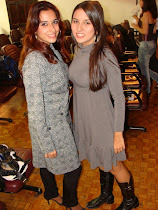This is the summary of a text we read in class, we were supposed to do it in groups:
In the text, the author talks about how to deal with activities that involve speaking and working in groups in a classroom. He divides the activities in three different groups.
> Acting from a script: It’s basically a role-play activity, where they have to act out scenes that are given by the teacher. In most cases the students have to go to the front of the classroom and present what they have prepared. The author enforces that the teacher needs to be careful when choosing the first students who go to the front. He says we have to ask the most confident students first and then go to the others.
> Communication games: They are normally imported from radio and TV. They normally work in pairs or groups like a competition that can involve scores and prizes. One example of it is the “Twenty Questions game”, a guessing game where one student answers questions made by his classmates that are trying to guess what he/she has in mind.
> Discussion: In this activity, the students have to discuss about a difficult or popular situation. He suggests that the students first write the topics that they agree and disagree and then rehearse in small groups and only after that, the teacher should open the discussion to the whole classroom. He also brings a real problem: when students are not comfortable to give their opinion and that’s why he suggests the written and the small groups’ preparation.
HARMER, Jeremy. The practice of English language teaching. 3rd edition, Longman




0 comments:
Post a Comment